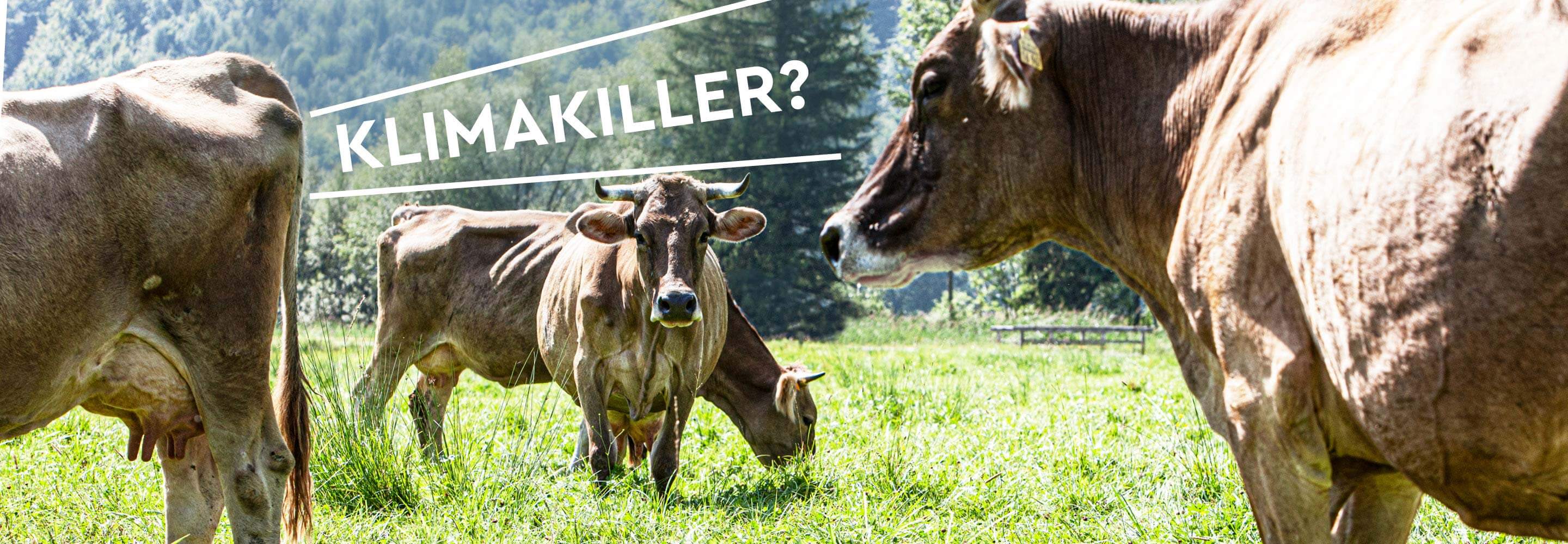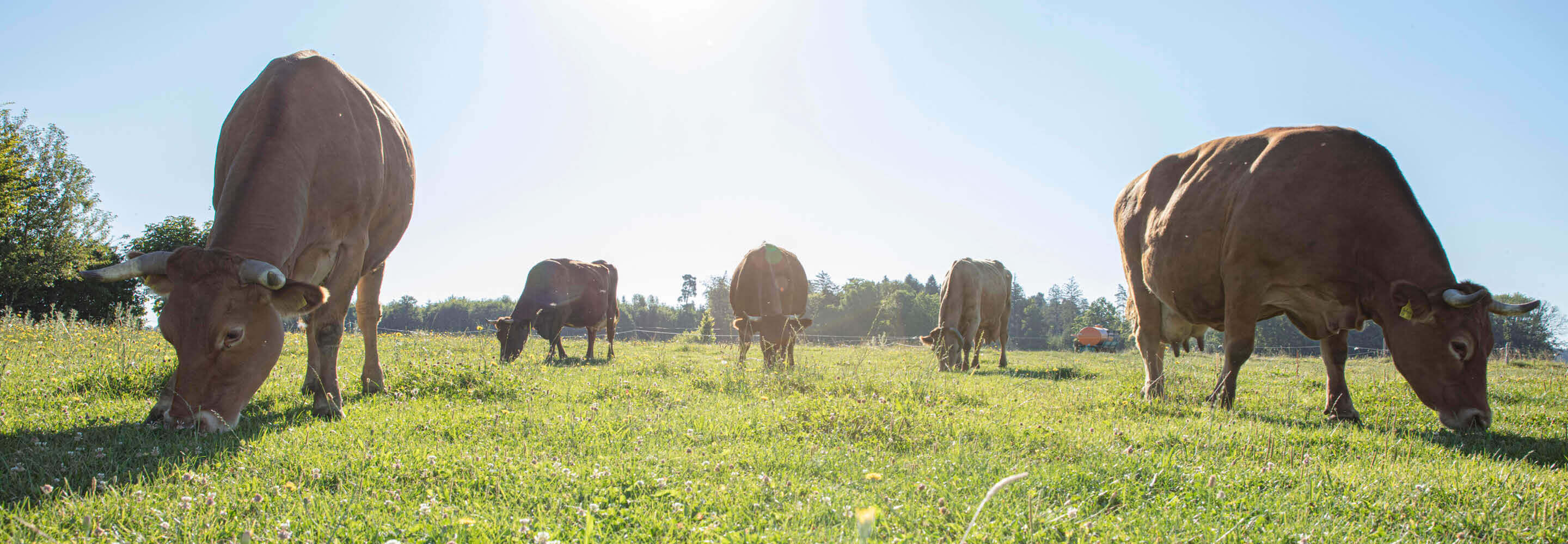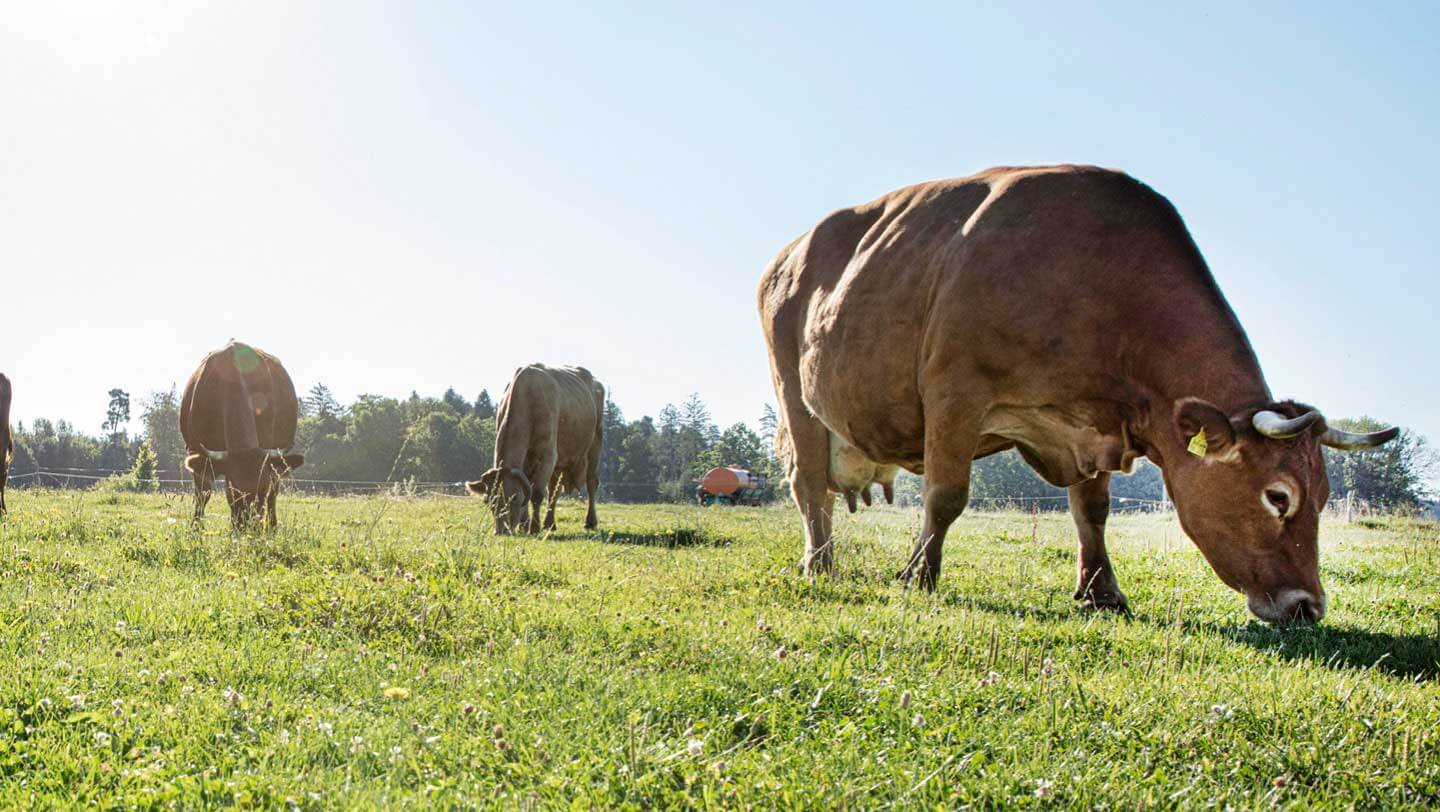

We enjoy your milk finely frothed in a cappuccino, your meat medium rare or crispy from the grill. We are upset about their emissions of climate-damaging methane. That is one thing above all: stinking double standards.
What many people know: The cow is a ruminant with four stomachs that emits methane during digestion. Alongside CO2, nitrous oxide and CFCs, this is one of the most climate-damaging greenhouse gases. Yes, the cow farts and burps. And many cows fart and burp a lot. By comparison, a human emits around 600 milliliters of methane per day. A cow averages around 200-300 liters a day. A good portion for the climate. What many people don’t know: Cows are only climate killers if there is an imbalance between the amount of land they are kept on and the amount of land they use. If there are as many cows on the pasture as the soil needs nutrients, the cow is a valuable livestock – and good for the climate.
Climate-friendly livestock farming does exist
Biodynamic agriculture is based on the principle of a circular economy. Their ideal: farmers only keep as many cows as they can feed with their piece of land. The cows are fed with home-grown fodder. Their manure ensures that nutrients are returned to the fields where both food and new feed for the animals are grown. This creates a natural cycle in which each organ needs the other: Humans, animals and nature work together.
In this way, the cows even contribute to the preservation of the pasture ecosystem: With their manure, they provide valuable fertilizer for the fields – the most natural way to return nutrients to the soil. Thanks to the cow, organic farmers can do without chemical pesticides. The soil quality is also better as a result: organically fertilized and well aerated, organic soil is rich in valuable microorganisms, also known as humus, and binds much more carbon dioxide than conventionally farmed soil. This makes humus one of the most important CO2 reservoirs on earth. In the long term, the grazing cow therefore ensures the reduction of CO2. Climate killer, my ass.


Demeter farmers value their animals
The German organic farming association Demeter has strict requirements for livestock farming. Among other things, there is a ban on dehorning cows and at least 60% of the feed must come from the farm itself. The Schrozberg dairy farmers, a cooperative of dairy farmers who produce Demeter milk according to these strict guidelines, also want to see the cow’s image polished. Because they know from their own experience that the climate problem is man-made. The Schrozbergers feed their cows exclusively with home-grown fodder such as grass and grain. The advantage: the feed comes closest to the cow’s natural diet and is easy to digest. It naturally contains less protein than the conventional concentrated feed used in factory farming. This in turn is used to increase the milk yield. The cattle should deliver top performance on a permanent basis. This increase in protein also leads to increased methane emissions. This is also how the cow got its climate-killer image.
The problem goes much further: there is no longer enough land in Germany to grow concentrated feed for factory farming. That is why it is produced in monocultures and shipped to Germany from all over the world. It makes you wonder who the cattle are here.
The turning point in climate change
More and more people are already rejecting products from factory farming for at least one of these reasons, want to get closer to nature again and counteract climate change. But it needs the commitment of even more people and requires far-reaching changes. Politicians must act and do so globally. The German government has set itself the target of reducing greenhouse gas emissions from agriculture by a third by 2050. However, it is also important that farmers receive start-up aid – for example, for converting to organic farming.
We as consumers can also actively support farmers in becoming more sustainable: By rethinking and changing our consumption habits. On the one hand, we have to reduce our high consumption of milk and meat and, on the other, be prepared to pay more for food produced in a more climate-friendly way and in good organic and Demeter quality.
This is also underpinned by the current scandal surrounding Tönnies, the large slaughterhouse that has been criticized for years. The price we pay in the long term for unecological, unsocial and unethical factory farming is much higher. Water, soil, climate and even cows will hopefully forgive us for our selfishness.